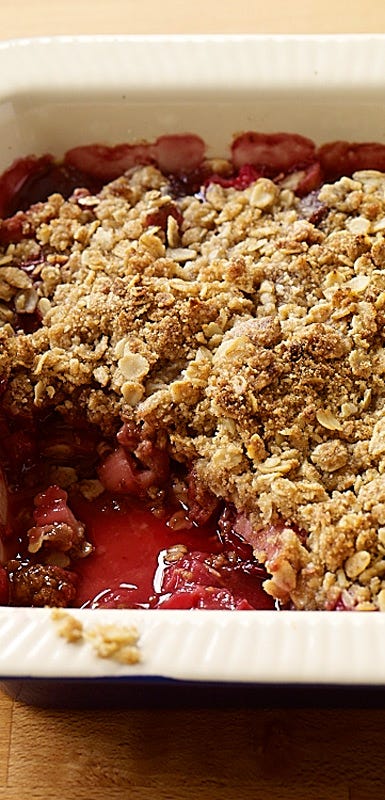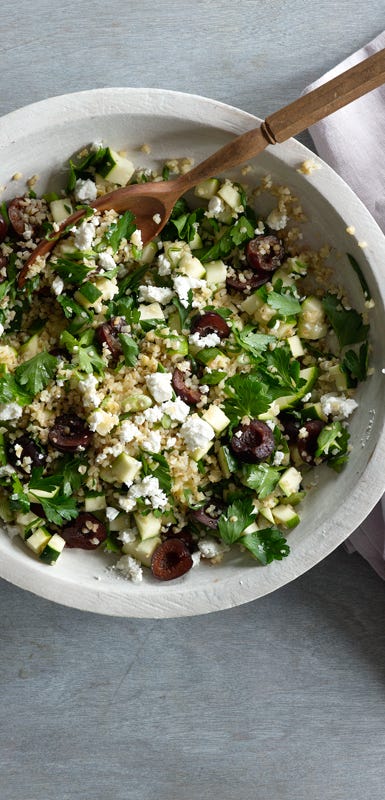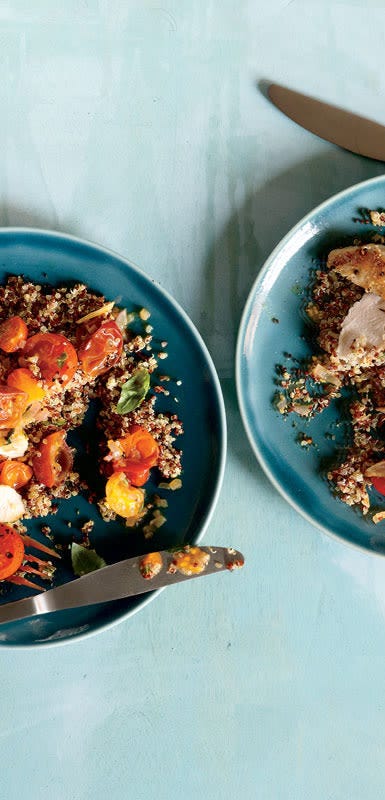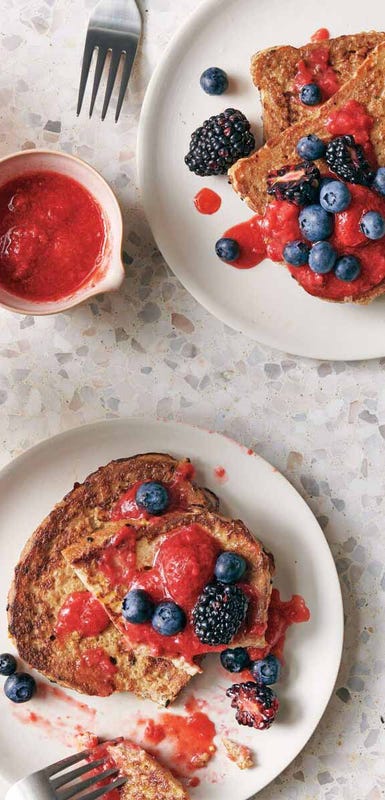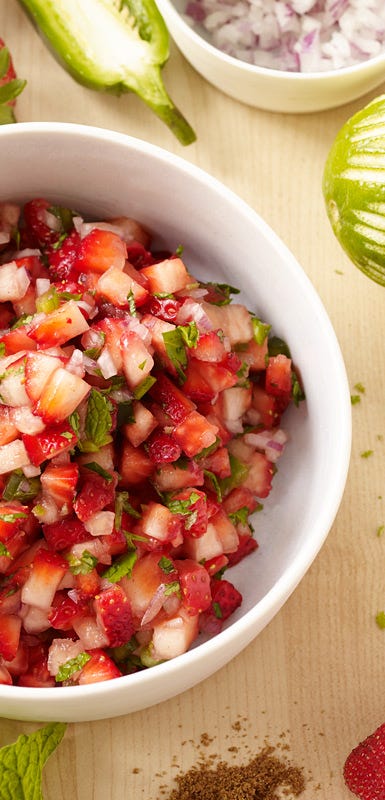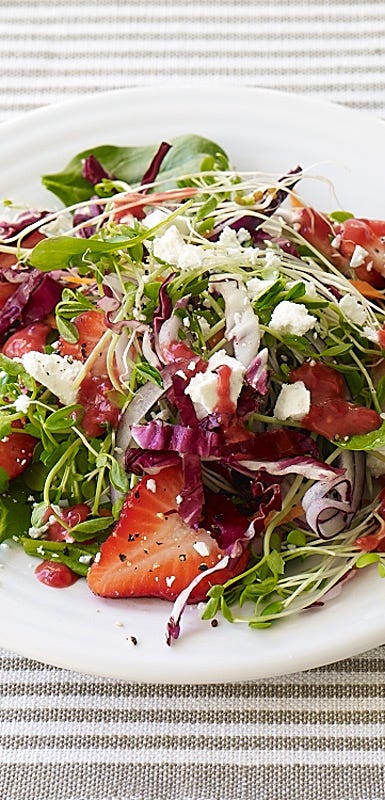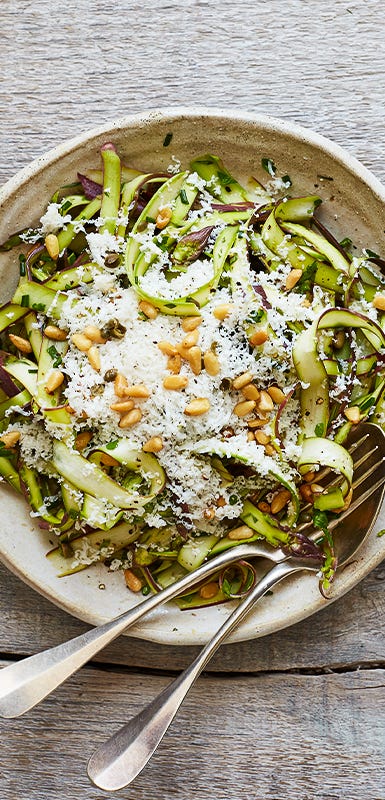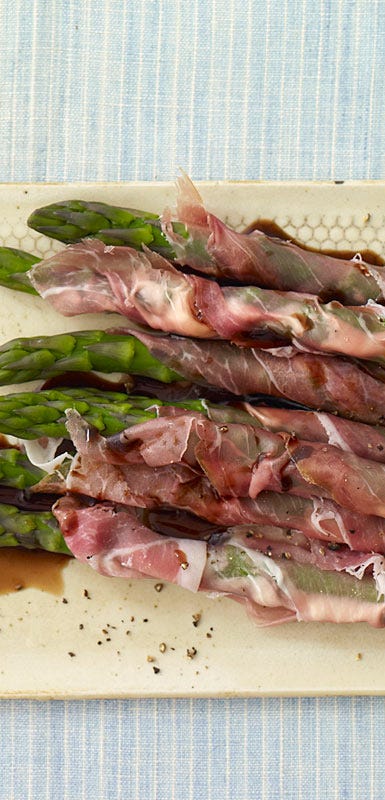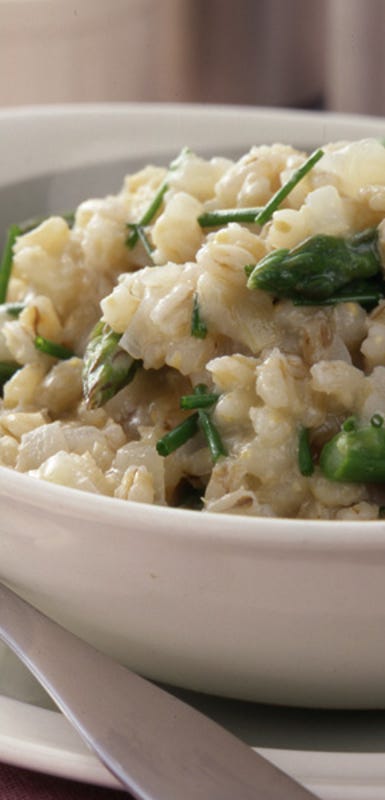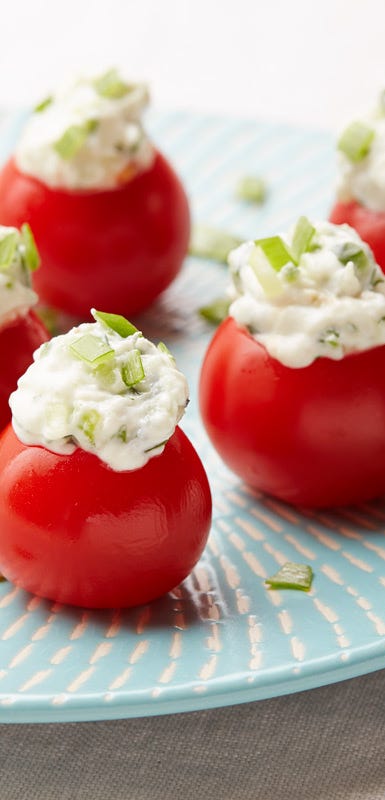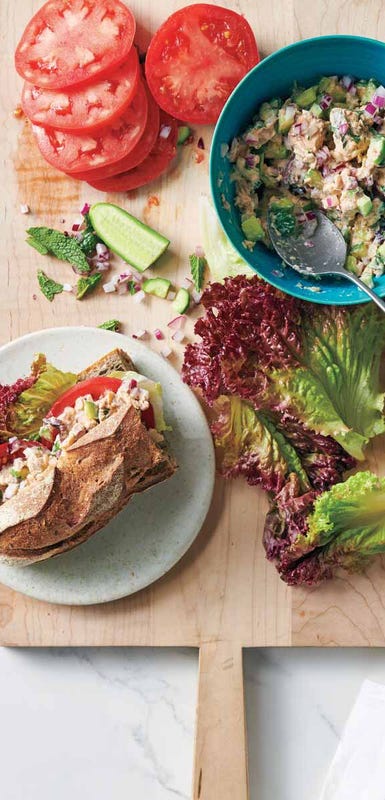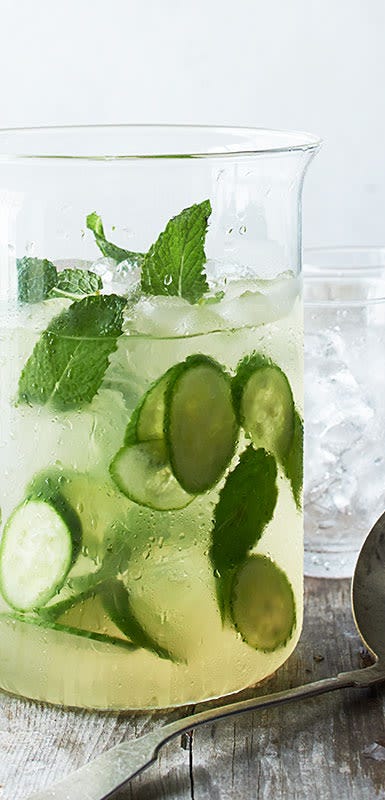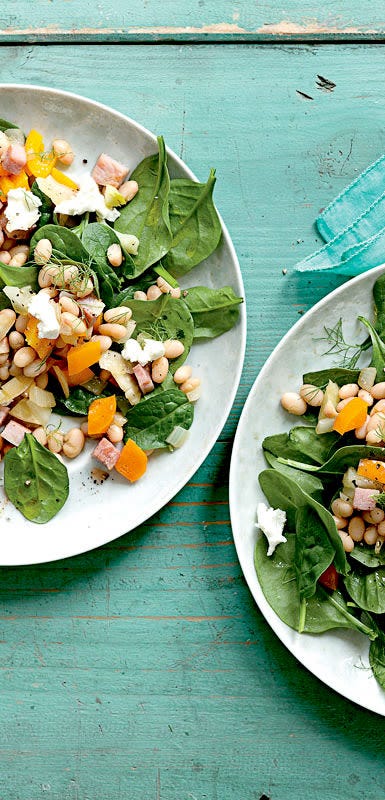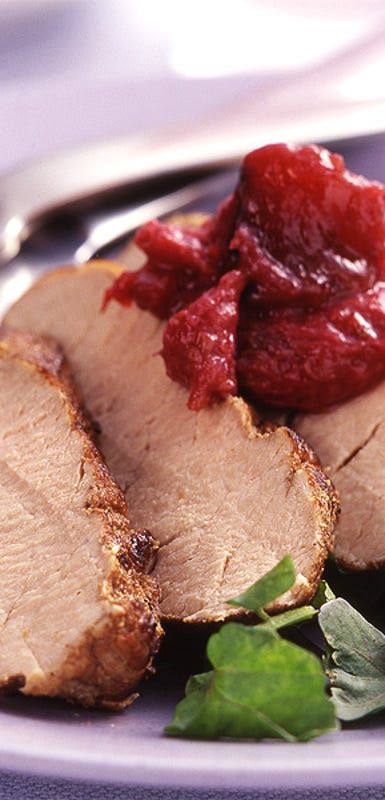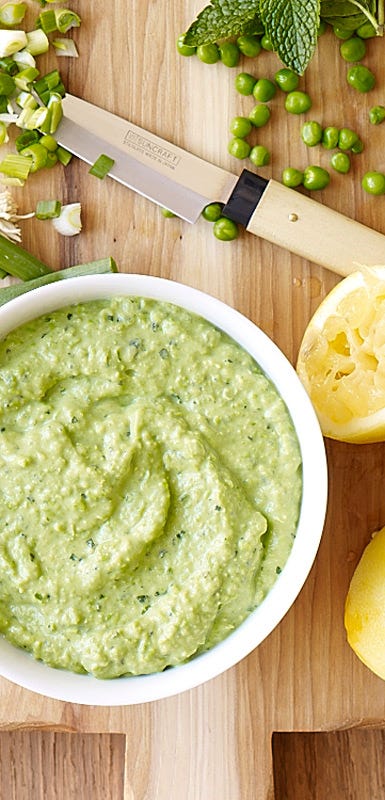Making the Most of Springtime Produce
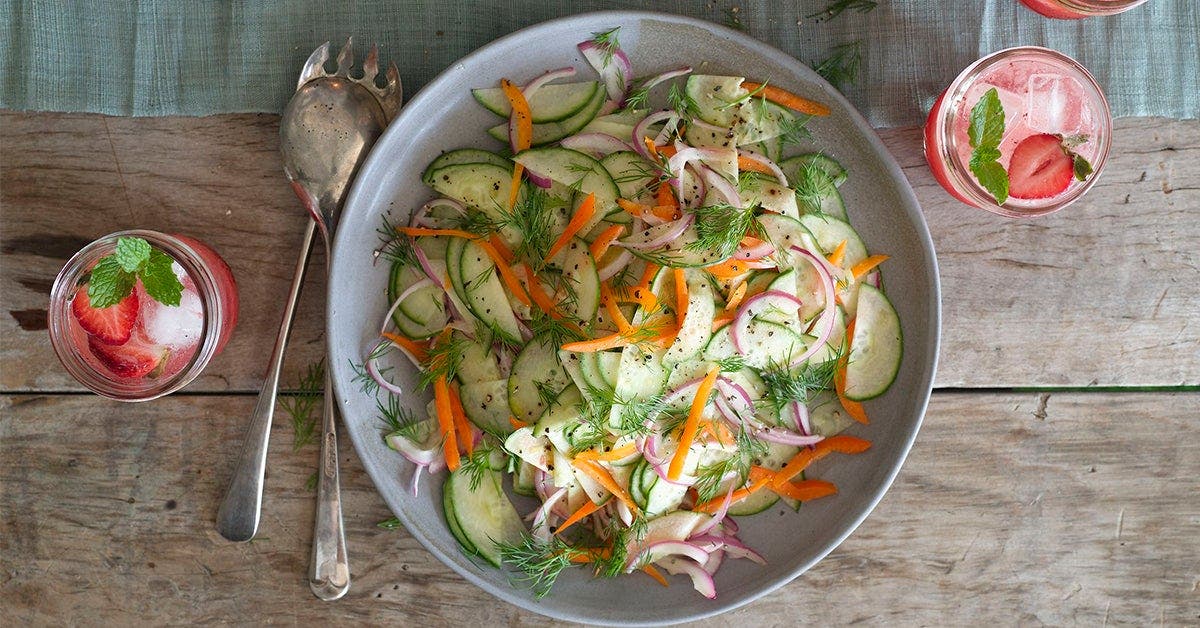
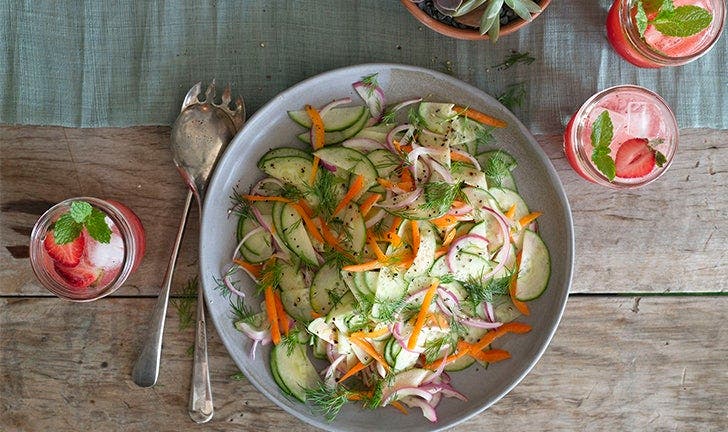
Longer days, rays of sun, farmers markets all around, the signs of spring are here! Isn’t that just a beautiful sound? With the arrival of spring comes warmer breezes, vibrant colours, fresh flavours, and the urge to “spring clean” everything from your health and wellness to your home. But in addition to cleaning out your closets, why not restock your fridge and pantry with some fresh and flavourful seasonal produce. There are some fruits and vegetables that can be purchased in any season like apples, mushrooms, onions, and potatoes, but the flavour and nutrition of some produce is further amplified in the springtime. Using food data from FoodLand Ontario’s fruit and vegetable availability guide, we compiled a list of our top 5 favourites that are worth searching for when you’re visiting your next farmer’s market or browsing the aisles of the grocery store. Here are the fruits and vegetables to keep your eye out for this spring season.
Cherries
Native to the east and now grown throughout various parts of the world, this ruby-red fruit has pleased the palates of many. If you’re tired of eating frozen, canned, or dried varieties, fresh cherries become available for picking and purchase in June until the end of July. While different varieties offer different levels of flavour, they also have different peak ripening periods, which allows farmers to harvest this fruit all throughout spring and summer.
At times, life can be a little sweet and/or a little sour, just like this heart shaped juicy fruit. Cherries can be broken down into two main categories: sweet and sour. Four of the most popular varieties of sweet and sour cherries include:
- Bing cherries: seen as the most famous sweet variety and sold in the largest amount commercially. These cherries are firm and juicy with an intense sweet aftertaste. They will range in colour from deep red to rich mahogany when ripened.
- Rainier cherries: referred to as the cherry industry sweetheart, these cherries are yellow on both the inside and outside with a hint of blush red on the exterior skin. This two-toned sweetheart offers a mild, sweet flavour with a hint of tartness.
- Tulare cherries: these cherries are a second-generation seedling of the Bing cherries and often provide a noticeably tangier aftertaste than its sweet counterparts. Although there is a variation in flavour, the Tulare cherries have the same dark red skin as that of the Bing.
- Montmorency cherries: the only variety of tart cherries. This firm, bright red fruit has a yellow flesh, clear juice, and tart flavour, making it a great ingredient for pies, jams, and jellies.
Which cherries are worth the buy? Look for cherries with an attached stem, a firm exterior and a bright colour. A general rule of thumb: the darker the cherry, the more intense the flavour. Make sure none of the cherries have a leaking juice as their own juice can spoil the exterior skin of the fruit. Both sweet and sour cherries should be refrigerated once picked/purchased to extend their life and preserve flavour. Sweet cherries can be stored in the refrigerator for up to 10 days while sour cherries are best consumed within 2-3 days. If you wish to freeze cherries to use throughout different seasons, ensure to remove the pit of the cherry and either pack in a simple syrup or pack in dry sugar using 1 cup of sugar to 4 cups of fresh fruit.
This fruit not only packs a sweet and sour punch; they are also nutritionally sound. Raw cherries are a nutrient dense fruit with low caloric content. Their dark red skin reflects the high level of phenolic compounds. In addition to this, they are also an excellent source of vitamin C, vitamin A, carotenoids, potassium, satiating fibre, serotonin, and melatonin. Eat your way to better health with cherries and enjoy these health benefits:
- Reduced arthritis pain and inflammation
- Reduced soreness and loss of strength following exercise
- Increased quality and quantity of sleep
- Improved cognitive function
Cherries are not in season for long so stop by your local grocery store, farmers market, or cherry picking field this springtime to snag some of the freshest varieties.
Strawberries
Whether you’re picking these from a field, a farmers market, or grocery shelf, enjoying them on waffles, baked into a dessert, or as a topping on a salad, these berries are at their peak sweetness from spring until the end of summer.
Coming into season in May, strawberries are often found in one of two strains, each bearing different varieties:
- Earliest-ripening strain: these berries are only available at Pick Your Own farms/fields and consist of two varieties - Veestar and Annapolis
- Mid-season strain: these berries are available at both Pick Your Own locations as well as are available for retail sales. There are six varieties available during this ripening window - Cavendish, Governor Simcoe, Kent, Startime, G19, MicMac, and Honey Eye.
Strawberries are best known for their adaptability and genetic flexibility, which is the reason for such a large number of harvested varieties. Farmers have been able to breed commercially desired characteristics such as size, colour, and disease resistance. However, all varieties will produce a red, sweet, and aromatic flesh. Strawberries will ripen from a creamy white, to green, and the colour progresses into a rich red that develops all the way to the center of the berries. Strawberries are well suited for wines and preserves, and pair well with the following:
- Herbs and spices: basil, mint, cinnamon, cardamom, vanilla
- Dairy: cream cheese, ice cream, crème fraiche, whipped cream, soft cheeses
- Beverages: grand mariner, rum, champagne, red and white wine
- Other options: dark chocolate, custard, pistachios, oats, honey, balsamic vinegar
When purchasing strawberries, make sure to look for those with an intact green cap, have no white or green spots, and have an aromatic scent. They can be stored in the refrigerator for 3-6 days but ensure that you do not wash the berries until they are ready to be consumed. Excess liquid will cause the berries to lose flavour and spoil at a faster rate. To preserve the strawberries and their nutrients, you can also freeze the berries whole, sliced, with or without sugar, or in a simple syrup for up to 12 months.
Strawberries are one of the world’s most popular berries, and that is undeniable with their bright red colour and sweet aromatics. However, there is much more to this berry than colour and taste. This fragrant fruit is an excellent source of vitamin B6, B12, vitamin C, potassium, manganese, folate, fibre, and phenolic compounds (flavonoids, ellagitannins, and ellagic acid).
- Enhanced cognition and motor functioning
- One specific type of phenolic compound, flavonoids, protects against kidney complications, which is common in those with type 1 and type 2 diabetes
- Phenolic compounds provide the berries with antioxidant and anti-inflammatory properties
- Reduced cardiovascular disease risk
- Increased immune function
Asparagus
Whether you’re pairing asparagus with a perfectly grilled piece of meat, adding it to a vibrant tray of vegetables, adding it to a pasta dish, or having it wrapped under a blanket of prosciutto, this green goddess is perfect as an appetizer, side dish, lunch, or dinner. The term “asparagus,” coming from Greece, means “spout” or “shoot” and is often referred to as the “Food of Kings.” In the 16th century, King Louis the XIV of France so fondly adored this green goddess that he had greenhouses built so that he could enjoy asparagus all year round. Asparagus really is a food fit for a King! Fast forward to present day and the largest asparagus producing countries are: China, Peru, Germany, Mexico, Thailand, and Spain. California ranks 7th on this list and Canada can be found sitting in the 16th spot.
Coming into season in May in Ontario, the harvested crops are divided into one of three varieties, each classified by the colour of their skin.
- Green asparagus: available in the Viking and Centennial selections. The green colour is a result of photosynthesis, where the plant will use sunlight to produce chlorophyll, producing the rich green skin.
- White asparagus: although more seldom, accounting for 3 acres of production, white asparagus is actually a type of green asparagus. Farmers add soil on top of the green spears so that they never see sunlight. No sunlight equals no photosynthetic behaviours, which results in a white exterior.
- Purple asparagus: also a variety of green asparagus but with a modified gene that provides it with the colour of its skin. Purple asparagus is much sweeter than its green counterpart.
How can you tell if this “Food of Kings” is fresh? Look for straight, crisp spears with green or purple tips and tight heads. This is the perfect indication that the bunch of asparagus is fresh. Whether you’re serving asparagus hot or cold, grilled, sauteed, steamed, roasted, baked, or shaved onto a salad, the fresh mild flavour is best enjoyed when the asparagus are fresh. However, fresh asparagus can be refrigerated for 2-3 days as long as the stalks are wrapped in a damp paper towel or you can opt for placing the stems in a jug of water. Prior to preparing the asparagus, wash the stalks and crowns thoroughly to remove any of the sand and grit and then snap off the tough ends. Conversely, fresh asparagus can be stored in a freezer for up to 1 year if you follow these simple steps:
- Prepare the asparagus as you normally would for cooking - wash the stalks and crowns, snap off the ends
- Group the stalks into small bundles
- Bring a pot of water to boil, place the bundles into the water, and boil for 1 minute
- Quickly lift the bundles out of the boiling water and immerse into cold water to stop the cooking process. Let sit for 2 minutes
- Pat the asparagus dry, package into a freezer safe bag, seal, and date the package
In order to maintain maximum nutritional content, flavour, colour, and texture, do not overcook the asparagus. Thin spears require less than 3 minutes to cook. Cooking tip: to speed up the cooking process, cut an “X” into the bottom of each stalk.
Eating local asparagus is the perfect prescription for optimal health and nutrition. Each ½ cup of asparagus contains 20 calories and is an excellent source of fibre, potassium, iron, manganese, selenium, folate, vitamin C, vitamin B6, vitamin E, zinc, magnesium, niacin, iron, phosphorus, glutathione, and rutin.
Eat your way to better health with asparagus and enjoy these health benefits:
- Asparagus is a diuretic, meaning it dilutes the urine, which helps to prevent the onset of renal and urinary tract infections
- Helps improve blood circulation
- Displays anti-inflammatory activity
- May inhibit blood clots
- Reduces symptoms of inflammatory bowel disease (IBD)
Now for the most sought out asparagus question - why is there an odour when I pee after eating asparagus? The pungent odour results from sulfurous amino acids, contained in the asparagus, that are released following digestion. Fun fact: ¼ of the population has the gene that allows you to smell these compounds.
Fresh, healthy, delicious, and versatile - head into your grocery store or farmers market this season to shop for local asparagus and experience the taste of spring.
Cucumbers
Contrary to popular belief, cucumbers are not just another relaxing addition to a spa day or a green boring vegetable our parents used to force us to eat. When used properly, they can be a staple for concocting the perfect beverage, jazzing up snacks, appetizers, lunches, and dinners. From finger foods to dinner party hors d’oeuvres, cucumbers are sure to please a crowd.
When walking through the aisles of a grocery store, looking at fresh local produce at a farmers market, or even referring to Canada’s Food Guide you will often see cucumbers hanging out with all the vegetables. They are after all a part of the gourd family. However, a fun fact is that from a botanical perspective, cucumbers are actually a fruit, not a vegetable since they grow from flowers and contain seeds.
Coming into season in June, fresh Ontario field cucumbers should be long, thin, firm, heavy to the touch, rounded at the tips, and dark green. The skins can be either smooth and thin or thick and rough. Avoid choosing cucumbers whose tips are yellow, wrinkled, or have water-soaked tips. Conversely, cucumbers sold in some retail locations may be sealed in plastic to protect their green exterior and seal in the natural moisture. Since cucumbers are sensitive to heat, it is best to choose cucumbers from a refrigerated section of the grocery store. Field or greenhouse cucumbers can be stored as their original form or in their original plastic in a cool tempered room or refrigerator.
When we consume cucumbers, our eating habits are slightly unusual. Cucumbers are one of the few vegetables whose seeds we actually do not remove prior to eating and we do so without even noticing, but for good reason! The seeds from cucumbers contain a large number of phytonutrients, specifically carotenoids and flavonoids, which can aid with the lowering of blood cholesterol levels. With that said, cucumbers really don’t get the appreciation they deserve in terms of their nutrient richness. In addition to providing phytonutrients, cucumbers are also a source of vitamin C, vitamin B1, vitamin K, biotin, phosphorus, potassium, magnesium, and tannins.
Eat your way to better health with cucumbers and enjoy these health benefits:
- Cucumbers are composed of 92.5% water, thus aiding in hydration
- Water-based vegetables can boost saliva production, which helps to remove the odour-causing bacteria that causes bad breath
- The water-rich flesh of cucumbers and the fibrous skin (insoluble fiber) aids with the movement of food throughout the digestive tract thus preventing constipation
- The potassium content of cucumbers can help lower blood pressure, which will lead to a reduced risk of strokes
- Lignans, one of the three key phytonutrients in cucumbers, will aid in reducing the onset of cardiovascular diseases
- Tannins release free radicals in the body and aid in pain reduction
- Vitamin K enhances bone health and aids with calcium absorption in the bones
- There is a reason cucumbers are used in spas, they have been shown to protect skin from the signs of aging
Spinach
If your diet is lacking certain minerals such as iron and magnesium, springtime is the most opportune time to incorporate spinach into your diet. Coming into season in May, this leafy green provides myriad benefits that not only Popeye can appreciate.
Spinach is grown in either mineral soil or muck soil and after harvest, the leafed spinach will have one of the following three leaf types: smooth (flat-leaf), medium, or frilly (savoy). Savoy spinach tends to be darker in colour and less fragile than flat-leaf spinach. The freshest spinach leaves will not be found in a bag. Typically, loose or bunched leaves, and those attached at their roots (sometimes referred to as crowns) offer a higher level of freshness. Avoid picking bunches that contain yellow, wilting leaves, and those with thick or tough crowns.
This leafy green is considered a perishable and heat sensitive vegetable. For that reason, spinach should be stored in the refrigerator immediately after purchasing and should be consumed within several days to avoid the wilting of leaves. To ensure freshness prior to refrigeration, follow these simple steps:
- Soak spinach leaves in cold water to remove sand residue
- Change the cold water several times until it is free of residue
- Pat dry on a clean towel, ensure no moisture is left on leaves
- Bag and refrigerate
General cooking rule: Spinach suffers from heat degradation. To avoid a loss of nutrients, cook on low to moderate heat and avoid overcooking.
When looking for flavour pairings for spinach, look for foods that add creaminess such as ricotta, goat cheese, and feta. For seasonings look for those that enhance flavour such as lemon juice or vinegar, use garlic for pungency, and nutmeg for a sweeter aromatic note. Spinach pairs well with shellfish and fish and most cuts of meat. Vegetables with an earthy note such as squash, tomatoes, onions, and red peppers also work well with spinach and can enhance its mineral flavour.
Spinach is such a widely enjoyed food that we sometimes overlook its broad level of nourishment in terms of all the nutrients it provides. This leafy green is a nutrient-rich food consisting of: phytonutrients, magnesium, iron, water soluble vitamins B6 and B12, vitamin C, vitamin E, vitamin K, folic acid, calcium, potassium, manganese, copper, zinc, fiber, lutein, and omega-3 fatty acids. It is now clear why Popeye ate so much Spinach! Now it is time to eat your way to better health with spinach and enjoy these benefits:
- One specific phytonutrient, carotenoids and omega-3 fatty acids, regulate inflammation throughout the body
- The high insoluble fiber content will add bulk to stool, which may help to prevent constipation
- Folic acid is essential for normal cellular function and tissue growth
- Iron helps to create hemoglobin, used for transporting oxygen to bodily issues
- Calcium is essential for bone health and is used as a signaling molecule for the body’s biggest muscle, the heart
- Lutein is linked to enhanced eye health and is a protective barrier to damage caused by sunlight


